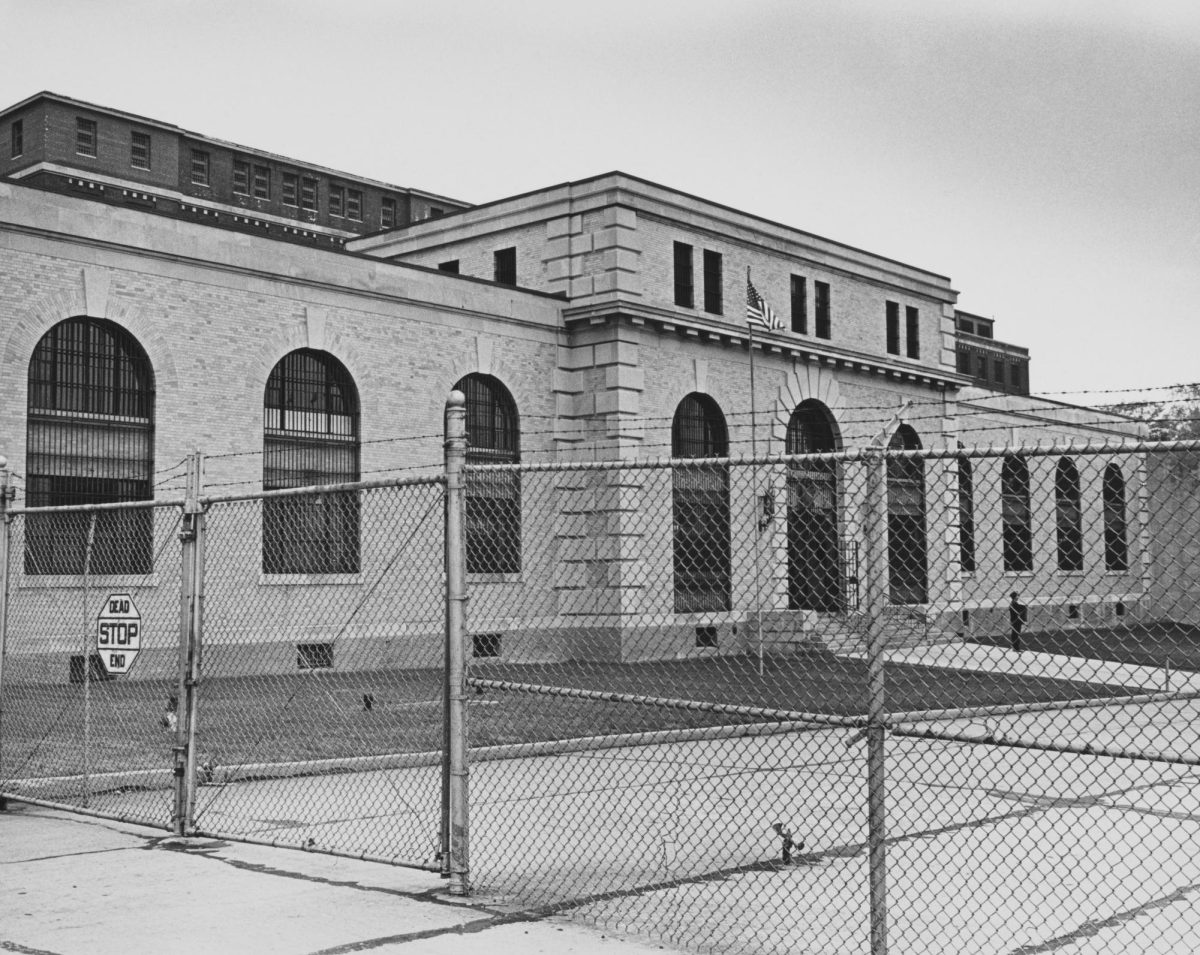
Near the woods behind the Wang Center, Vishnu Rajan slowly walks around in a circle of red mulch. With his head tilted downward, he looks as if he is searching for his cell phone in the grass. Rajan may have been searching for something, but it is certainly not a tangible object.
“I come here to walk and clear my head before class sometimes,” said Rajan, 20, a sophomore and engineering major. “Sometimes I’m looking to relax and other times I’m just trying to sort things out.”
Faculty and students like Rajan come to walk the Red Dragon Labyrinth on Stony Brook’s West Campus to mediate or to pray. Even local high school student groups walk the rings in pursuit of its potential mental health benefits.
The Red Dragon Labyrinth is between Mendelson Quad and the Student Union. It is formed by spiraling rings of red mulch with a grass border. The total length of the spiral from the entrance to center is 54 feet. It is almost impossible to see the red coils because the mulch bed sits just below the grass.
The idea of a labyrinth is often confused with a maze, but the two are distinctly different. A labyrinth has one entrance and only one path to the center. A maze may have multiple entrances, exits, paths, and dead-ends. A labyrinth contains no dead-end paths or tricks.
Ed O’Connell created the Red Dragon Labyrinth in 2005. O’Connell, both a radiation safety officer and a union grievance officer at Stony Brook University, first introduced to labyrinth walking at Little Portion Friary in nearby Mount Sinai. He was baking bread once a week with the Episcopal Francisian brothers when he started to walk the labyrinth at the friary.
“I was very intrigued by the whole process,” he said. O’Connell decided that meditative walking is something that his colleagues should experience. After waiting a year for permission from the university to build a labyrinth, O’Connell and Brother Maximillian Kolbe of Little Portion Friary spent three days digging up the grass and laying down the mulch.
Once a month, O’Connell coordinates a labyrinth walk for members of his union, United University Professionals. In addition to reducing stress, “it changes ones point of view,” he said. According to O’Connell, typically 10 to 15 people show up for the walk.
Pam Wolfskill, the assistant chairwoman to the political science department, has gone on a couple of O’Connell’s walks. “I mostly walk for clearing the mind and centering,” she said. “I would stress that the walk is different each time.”
O’Connell said he invites students who are passing by to join him on his monthly walks. “If you have a big midterm or a final coming up, I think walking the labyrinth could help your performance,” he said. O’Connell said he would welcome requests to lead labyrinth walks for student groups or organizations.
Although campus organizations may not have found their way to the red mulch, a high school group has. A program run by the Stony Brook University Medical Center helps exemplary high school students from disadvantaged communities to strive for an education and a career in the health care field. Catherine McWilliams, who works for community related projects for at the hospital, brought a group of high school students to the Red Dragon Labyrinth.
“The students in our program are taking rigorous classes and are involved in a lot of activities,” McWilliams said. “Walking the labyrinth gave them a rare opportunity to take time out of their busy schedules to relax.”
For O’Connell and others, labyrinth walking is a way to clear their minds, but for some it is a profession. Linda Mikell is a labyrinth facilitator and is certified by Verditas, a nonprofit organization that promotes labyrinth education. When she’s not running labyrinth programs for the Unitarian Universalists Fellowship in Stony Brook, Mikell travels with a canvas labyrinth, so people without access to a labyrinth can experience the walk.
At a lecture at Stony Brook University, Mikell began by describing the three stages of labyrinth walking: releasing your stressors or harmful thoughts as you enter the labyrinth, receiving new perspectives on life in the center and returning back to your day with a clear mind as you walk out. According to Mikell, the spiral shape of the labyrinth allows for a shifting of thought from the imaginative right side of the brain to the logical left side of the brain.
“There is not a right or wrong way to walk a labyrinth,” Mikell said, despite the itinerary she recommends. “It is whatever you want it to be.”
In addition to relieving stress, labyrinths can create camaraderie. “You get a sense of community when you’re walking with a lot of people,” Wolfskill said. Since there is only one path, walkers have to yield to each other and let others pass if they are walking at a quicker pace.
Maryann Areostatico, who is a manager for the environmental safety department, is a frequent walker of the Dragon. “Everyone should at least try it,” she said. “It may feel awkward at first but in the end most people will feel a sense of unity with oneself and the world around you.”










